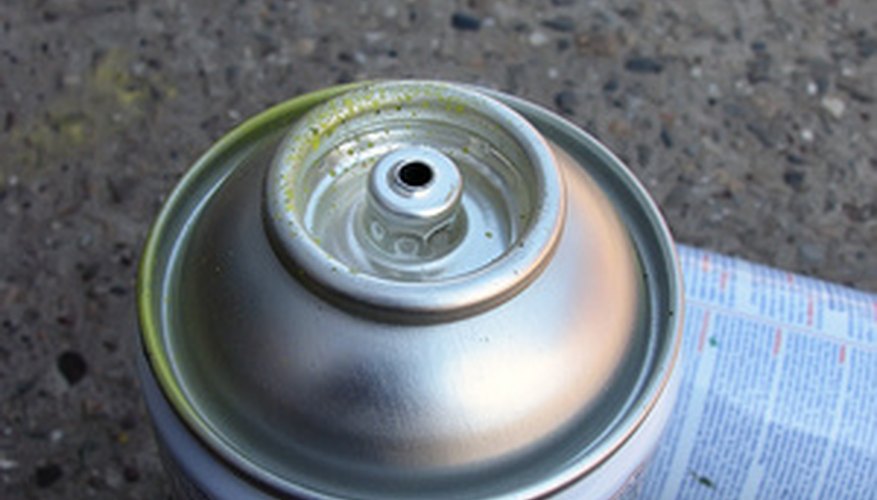Vertical blinds often cover large sliding glass doors and are hung from a long ceiling-mounted curtain track. The blinds glide along the track, which makes them easy to stack on one side when you need to enter or exit through the large glass door. This blind type opens similarly to horizontal blinds, by grasping and twisting a wand attached at the end of the blind system. Whether your vertical blind slats, also known as vanes, are constructed from wood, fabric or plastic, you can change their colour to suit your room's design needs.
- Vertical blinds often cover large sliding glass doors and are hung from a long ceiling-mounted curtain track.
- The blinds glide along the track, which makes them easy to stack on one side when you need to enter or exit through the large glass door.
Spread out your tarpaulin over a large, flat work surface such as the floor.
Remove your vertical blinds from their track. First open up your vertical blinds by twisting the wand. If the vanes hang from hooks, pull up on the top of each vane to remove it. If the vanes hang from a clasp, grasp the clasp from which the vane hangs to release the vane.
Lay out your removed vanes across your tarpaulin. Wash each vane completely with a soapy, water-soaked sponge, including front and back. Wring out your sponge and saturate it with clean water. Remove any soapy residue from your vanes. Your vanes will be ready for paint once they've dried.
- Lay out your removed vanes across your tarpaulin.
Lightly sand the front and backs of your vanes if they're constructed from wood. Wipe away any dust with your dry rag.
Arrange your vanes so that they all lay completely flat and do not overlap. Spray them with your primer, using short "strokes" and even pressure. Allow the vanes to dry.
Flip your vanes onto their unprimed sides. Spray-prime them, and then allow them to dry. Coat that side completely with spray paint, using the same method as you did for priming. Add a second coat if necessary, after the first coat has dried.
- Arrange your vanes so that they all lay completely flat and do not overlap.
- Coat that side completely with spray paint, using the same method as you did for priming.
Flip your vanes to show the first side you primed, which still only shows primer. Paint this side, adding an additional coat after the first if necessary.
Reattach your vanes to their tracks once they've finished drying. Pick up your tarpaulin and dispose of it or store it to reuse in other projects. Dispose of empty spray paint cans in accordance with your local ordinances.
TIP
Use the appropriate spray paint for your blind's material. Normal spray paint works for wood blinds, but you'll have more success with fabric spray paint for fabric blinds and plastic-specific spray paint for plastic blinds.
WARNING
Spray-paint in a well-ventilated space or outdoors.
